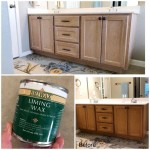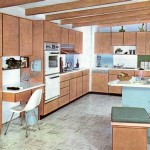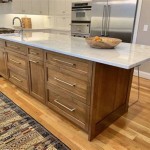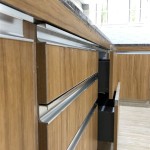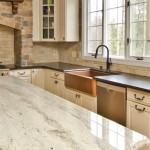Kitchen Cabinets Over Sink: Maximizing Space and Style
In the heart of every home lies the kitchen, a space where culinary magic happens and memories are made. Kitchen design, therefore, plays a crucial role in creating a functional and aesthetically pleasing environment. One design element that has gained significant popularity is the incorporation of cabinets over the sink. This feature not only enhances the visual appeal but also optimizes storage space and functionality in the kitchen.
Enhanced Storage and Functionality
Kitchen cabinets over the sink are a clever solution for maximizing storage space, particularly in smaller kitchens where every inch counts. By utilizing the vertical space above the sink, these cabinets provide a dedicated area for storing various kitchen essentials. They can accommodate a wide range of items, including:
- Dishes and glassware: Store frequently used dishes, cups, and glasses within easy reach.
- Cookware and utensils: Keep pots, pans, and cooking tools organized and readily accessible.
- Food storage containers: Conveniently store reusable food containers for meal prep and leftovers.
- Cleaning supplies: Store cleaning agents, sponges, and other cleaning essentials for efficient cleanup.
- Small appliances: Some cabinets can accommodate smaller appliances like blenders, toasters, or coffee makers.
Beyond storage, cabinets over the sink offer several other advantages:
- Improved workflow: Having essential items within easy reach reduces steps and enhances the overall workflow in the kitchen.
- Enhanced counter space: By moving storage items above the sink, you free up valuable counter space for meal preparation and other activities.
- Reduced clutter: Cabinets over the sink help maintain a clean and organized countertop and create a more inviting kitchen environment.
Aesthetic Appeal and Style
Cabinets over the sink can significantly enhance the aesthetic appeal of your kitchen. They add a touch of elegance and sophistication to the design, creating a more cohesive and polished look. The style and design of these cabinets can be customized to match the overall theme of the kitchen. Here are some factors to consider:
- Cabinet style: Choose from various styles, such as shaker, traditional, modern, or contemporary, to complement the existing kitchen design.
- Cabinet material: Select materials like wood, laminate, or metal to match your preference and budget.
- Cabinet color and finish: Opt for colors and finishes that harmonize with the rest of the kitchen cabinetry and décor.
- Hardware and accessories: Choose knobs, pulls, and other accessories that complement the cabinet style and add a finishing touch.
The addition of cabinets over the sink can create a focal point in the kitchen, drawing the eye towards a well-organized and visually pleasing space. By carefully selecting materials, colors, and finishes, you can create a stunning and personalized design that complements the overall style of your kitchen.
Practical Considerations and Installation
While incorporating cabinets over the sink offers numerous advantages, it's crucial to consider a few practical aspects before installation. Here are some key factors:
- Sink size and design: Ensure that the cabinets compliment the size and depth of your sink. This will maximize functionality and maintain ease of access.
- Cabinet size and placement: Carefully measure the space above the sink to determine the optimal size and placement of the cabinets. Ensure sufficient clearance for opening and closing the doors.
- Ventilation: Consider whether the cabinets will obstruct any existing ventilation systems, such as range hoods. Ensure adequate ventilation to prevent moisture buildup.
- Professional installation: For optimal results and to avoid any potential issues, it's recommended to seek the expertise of a professional contractor for the installation process.
By carefully planning and considering these factors, you can ensure that the installation of cabinets over the sink is a successful and rewarding project. These cabinets offer a practical and stylish solution for enhancing the organization, functionality, and overall aesthetic appeal of your kitchen.

Cabinets Over Kitchen Sink Transitional

Our Old Victorian House Has No Window Over The Kitchen Sink Here Is A Collection Of Decor Cabinets Wall

Cabinets Above Kitchen Sink Transitional

Options For A Kitchen Design With No Window Over The Sink Victoria Elizabeth Barnes

Glass Front China Cabinet Above Square Sink With A Polished Nickel Gooseneck Faucet Design Ideas

14 Ideas For Decorating Space Above Kitchen Cabinets How To Design Spot

The Problem With White Kitchen Cabinets

Drying Racks Above Sink Inside Kitchen Cabinet Cabinets Interior

Kitchen Sink Cabinet Organization Ideas And Solutions Modern Glam

Kitchen Sink With Cutting Board Transitional
Related Posts


